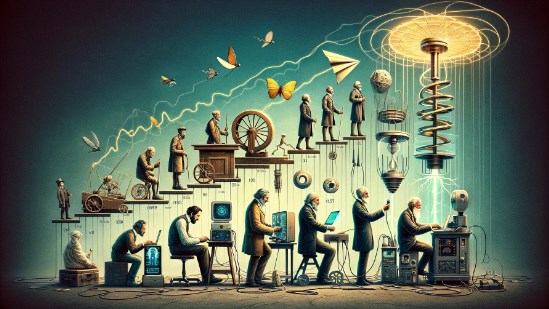Historical Milestones: The Evolution of Electromagnetic Technology
The journey of electromagnetic technology, from the early discoveries of magnetic phenomena to the sophisticated applications that define our modern world, is a saga of curiosity, innovation, and transformative breakthroughs. This article explores the pivotal milestones that have marked the evolution of electromagnetic technology, tracing the path from ancient observations to the advanced technologies of today.

Ancient Discoveries and Early Insights
- 600 BC: The Greeks discover lodestones, naturally magnetized pieces of the mineral magnetite, which they use for navigation. This marks one of the earliest known uses of magnetic properties.
- 1600 AD: William Gilbert publishes “De Magnete”, a comprehensive study on magnetism and electricity, distinguishing between the two forces for the first time and introducing the term “electricity” from the Greek word for amber, elektron.
Foundational Theories and Experiments
- 1820: Hans Christian Ørsted demonstrates that an electric current creates a magnetic field, founding the science of electromagnetism. This discovery reveals the intimate relationship between electricity and magnetism.
- 1831: Michael Faraday discovers electromagnetic induction, showing that a changing magnetic field produces an electric current. This principle becomes the cornerstone of electric generators and transformers.
- 1864: James Clerk Maxwell formulates Maxwell’s Equations, a set of differential equations that describe how electric and magnetic fields are generated and altered by each other and by charges and currents. This theoretical framework unifies electricity, magnetism, and light as manifestations of the electromagnetic field.
Technological Advances and Applications
- 1876: Alexander Graham Bell invents the telephone, using electromagnetic technology to transmit voice across a wire by converting sound waves into electrical signals.
- 1887: Heinrich Hertz demonstrates the existence of radio waves, validating Maxwell’s predictions and paving the way for wireless communication.
- 1895: Wilhelm Conrad Röntgen discovers X-rays, electromagnetic waves that provide a revolutionary diagnostic tool in medicine.
The 20th Century and Beyond: Expansion and Innovation
- 1901: Guglielmo Marconi conducts the first successful transatlantic radio transmission, demonstrating the practical application of radio waves for long-distance communication.
- 1930s: The development of radar technology, using electromagnetic waves to detect the range, speed, and other characteristics of distant objects, becomes a pivotal tool in World War II.
- 1947: The invention of the transistor by William Shockley, John Bardeen, and Walter Brattain at Bell Laboratories revolutionizes electronics, leading to the miniaturization of circuits and the birth of the digital age.
- 1960s: The advent of laser technology, generating highly focused beams of light through the amplification of electromagnetic waves, finds applications in medicine, communications, and manufacturing.
- 1970s-1980s: The development of fiber-optic communication systems, using light to transmit information across long distances with minimal loss, dramatically improves the efficiency and capacity of telecommunication networks.
- 1990s-Present: The explosion of the Internet and wireless communication technologies, including cellular networks and Wi-Fi, transform society, enabling global connectivity and access to information.
Conclusion
The evolution of electromagnetic technology is a testament to human ingenuity and the relentless pursuit of understanding and harnessing the forces of nature. Each milestone not only advanced our knowledge of the electromagnetic spectrum but also catalyzed societal transformations, reshaping how we communicate, work, and live.
As we continue to explore the frontiers of electromagnetic technology, from quantum computing to space exploration, the journey of discovery and innovation is far from over. The history of electromagnetic technology reminds us that the quest for knowledge is a powerful driver of progress, pushing the boundaries of what is possible and opening new horizons for future generations.